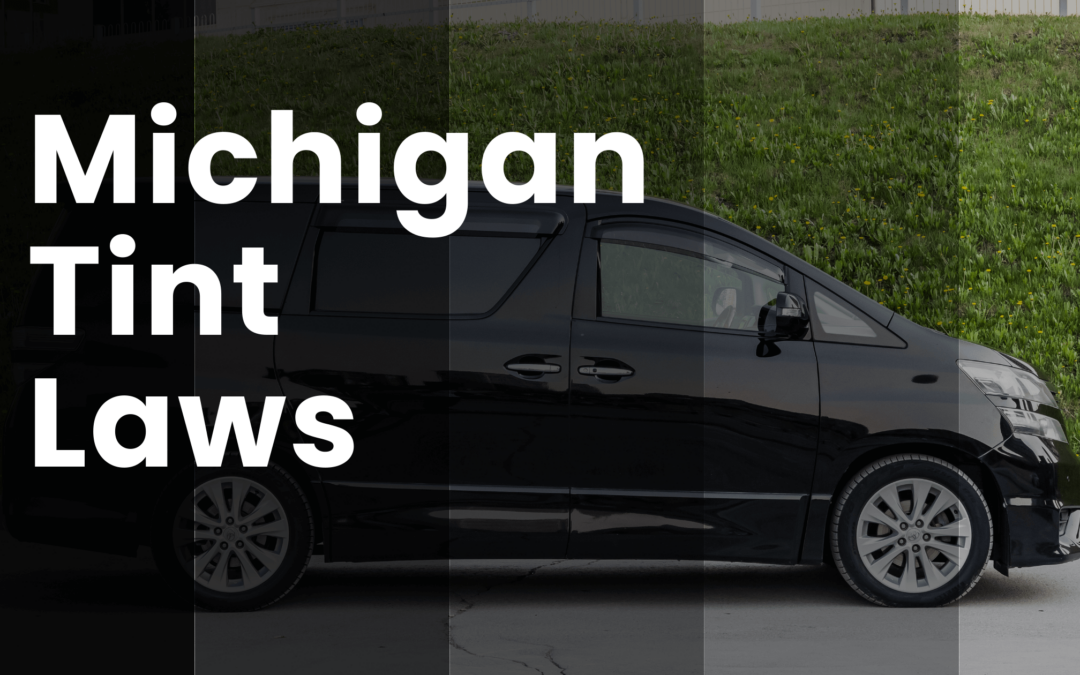Michigan Tint Laws
Michigan’s regulations regarding car window tinting were established in the year 2000. For a comprehensive understanding of the tint’s darkness, reflectivity standards, and the intricate rules and regulations governing window tinting in the state, read on.
Disclaimer
While I have a background in commercial law and strive to provide accurate and informative content, it’s important to note that I am not a legal expert. The information presented in this blog is based on my interpretation of the subject matter, and laws can vary by location and change over time. It is strongly recommended that readers verify all sources of information and consult with legal professionals or relevant authorities before making any decisions related to tint laws.
Understanding the Terminology Regarding Tint Laws
The most important part of the legislation is understanding what VLT is and how law enforcement services check or test the percentage.
What is VLT
VLT, or Visible Light Transmission, is a measure of the amount of visible light that can pass through a window tint or film. It is commonly used to determine the darkness or opacity of window tints, and it’s an important factor in window tinting laws and regulations.
VLT is typically expressed as a percentage. For example, a window tint with a VLT of 20% allows only 20% of visible light to pass through, making it relatively dark and less transparent. Conversely, a window tint with a VLT of 70% allows 70% of visible light to pass through and is much lighter and more transparent.
How do Law Enforcement services test the VLT percentage?
Window tinting laws vary by jurisdiction, and they often specify the maximum allowable VLT for different types of windows on a vehicle, such as the front windshield, front side windows, rear side windows, and rear window. These laws are designed to ensure that drivers have adequate visibility and that law enforcement can see into vehicles for safety and identification purposes. The manner that they go about testing the VLT is by using a VLT gauge/meter.
Here is a YouTube Short from @TrafficServices and @TorontoPolice showcasing the device and how it works. Even though it is in Canada, it still is helpful to understand how the tint darkness is measured.
Window Tint Darkness in Michigan:
Michigan mandates a specific Visible Light Transmission (VLT) that denotes the percentage of visible light allowed through your car windows. This VLT requirement varies for sedan cars and SUVs/vans.
Michigan Tint Laws For Sedans and SUVs/Vans:
- Windshield: Non-reflective tint is allowed on the top 4 inches of the windshield. The remainder of the windshield should maintain maximum transparency for unobstructed visibility.
- Front Side Windows: Any degree of darkness is permissible but only on the top 4 inches of the front side windows, ensuring that most of the window remains clear.
- Back Side Windows: There are no specific restrictions on darkness for the back side windows, allowing flexibility in your choice of tint darkness.
- Rear Window: Like the back side windows, you have the freedom to apply any degree of tint darkness to the rear window.
Michigan’s regulations permit window tinting on the front windshield and front side windows, but exclusively on the top 4 inches. Tinting below this limit is not allowed on these windows.
| Type of Window | Sedans | SUVs/Vans |
|---|---|---|
| Windshield | Non-reflective tint allowed on the top 4 inches of the windshield | Non-reflective tint allowed on the top 4 inches of the windshield |
| Front Side Windows | Any degree of darkness allowed on the top 4 inches of the front side windows | Any degree of darkness allowed on the top 4 inches of the front side windows |
| Back Side Windows | No specific restrictions on darkness for the back side windows | No specific restrictions on darkness for the back side windows |
| Rear Window | No specific restrictions on darkness for the rear window | No specific restrictions on darkness for the rear window |
Window Tint Reflection in Michigan:
Window tint serves the purpose of reducing glare and heat by reflecting incoming light. In Michigan, there is a particular regulation regarding the level of reflection permissible when using window tint.
Reflectivity Tint Laws For both Sedans and SUVs/Vans:
- Front Side Windows: The front side windows must not be more than 35% reflective.
- Back Side Windows: Reflectivity for the back side windows must not exceed 35%.
Additional Michigan Window Tint Rules and Regulations:
Michigan’s regulations on window tinting encompass various essential rules:
Side Mirrors
Your vehicle must be equipped with side mirrors if the rear windshield’s visibility is obstructed.
Restricted Colors
Silver and gold tint colors are explicitly prohibited by Michigan law.
Certificates
Manufacturers of window film are not required to certify the film they sell within the state.
Stickers
While not mandated by law, the state does not require a sticker to identify legally tinted windows.
Medical Exceptions
Michigan offers medical exemptions for special window tint, providing flexibility for individuals with specific needs.
Regulations for Out-of-State Drivers
The same regulations apply to out-of-state drivers as those for drivers living in the State.
If you are from States such as Ohio, Indiana, Illinois, Wisconsin, and Minnesota, you are expected to abide by these laws and regulations.
Keep in mind that interpretations of Michigan’s tinting laws may vary between different counties and local jurisdictions. To ensure compliance, safety, and accurate information, it is recommended to verify these regulations with your local Department of Motor Vehicles (DMV) or consult local law enforcement authorities.
Our information about window tint laws in Michigan was most recently updated in 2023. If you come across any inaccuracies or outdated details, feel free to contact us so that we can address them promptly.

